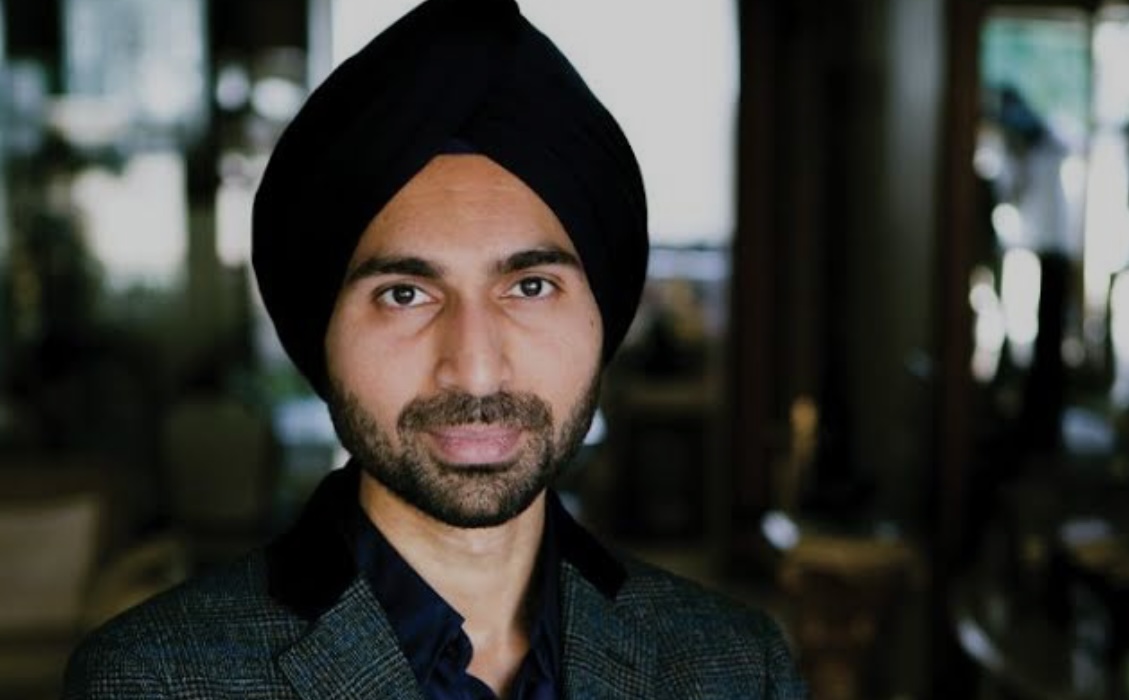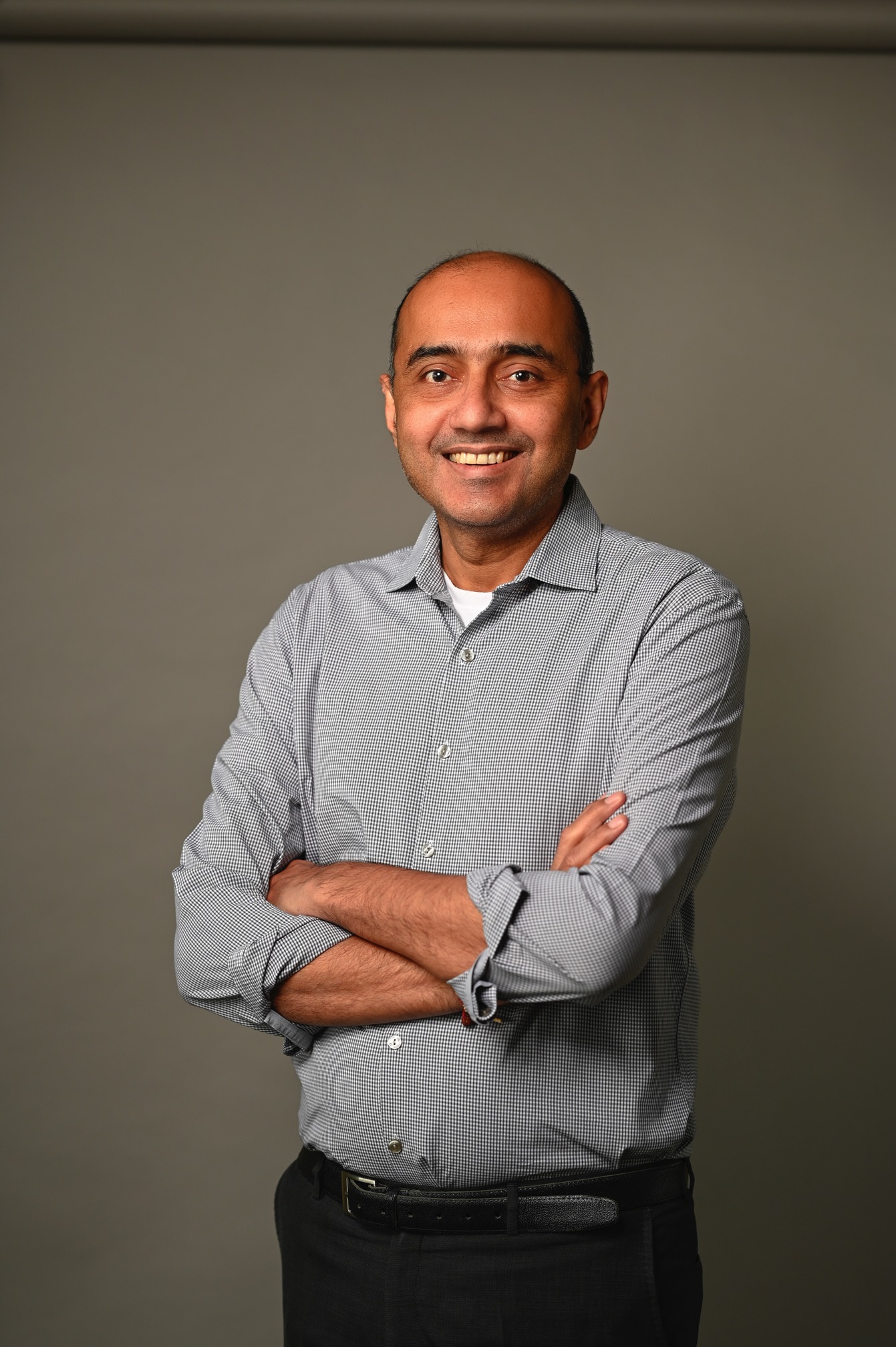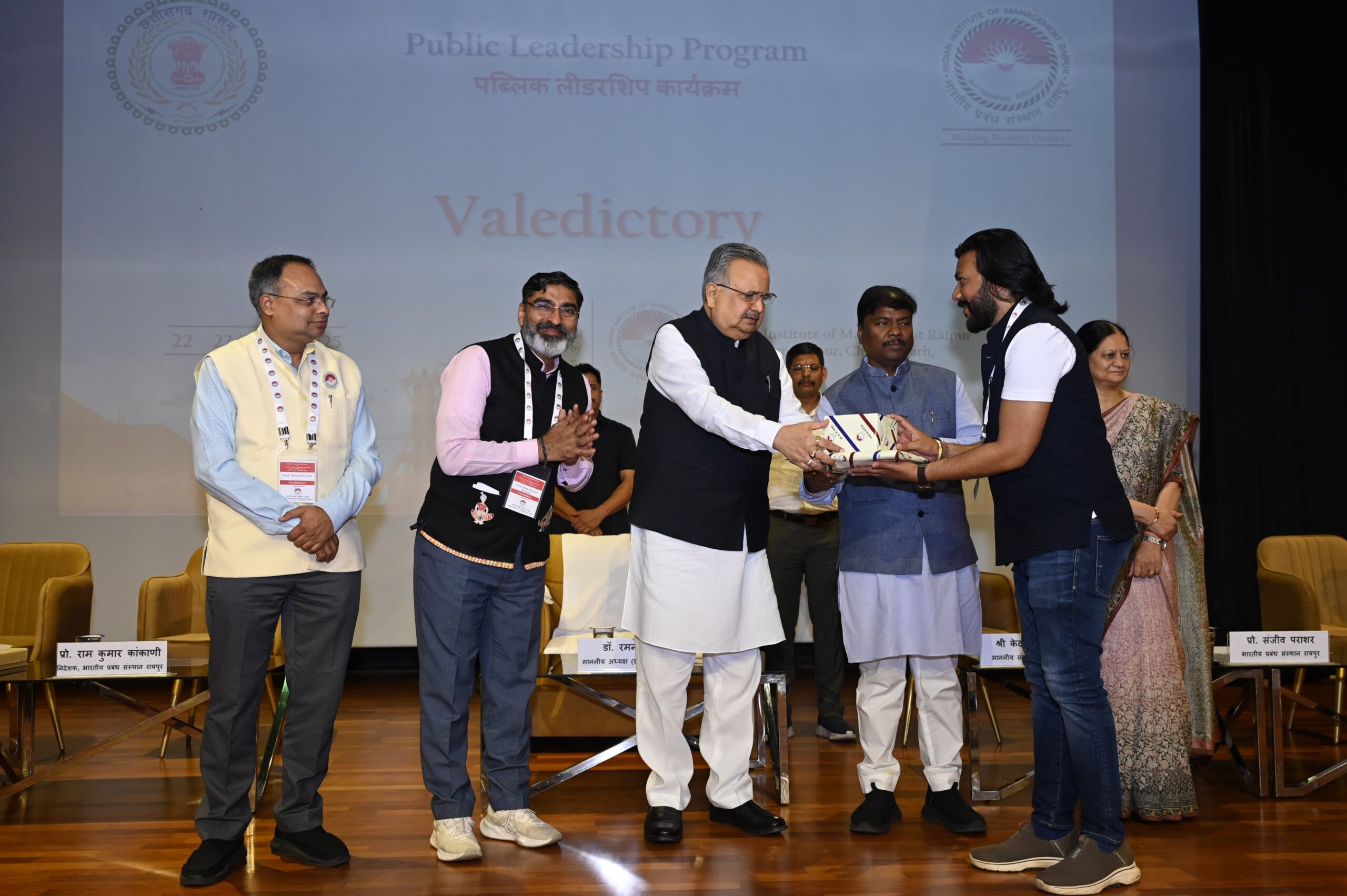‘Rise & Shine’ Calendar Showcases Arunachal Pradesh’s Beauty
March 24, 2025:For over six decades, Femina, India’s foremost women’s lifestyle brand, has empowered and celebrated the aspirations of Indian women. From shaping conversations on beauty and ambition to championing purpose-driven success stories, the brand has consistently spotlighted women who inspire. The March issue is no exception, featuring the reigning Femina Miss India 2024 queens – Nikita Porwal, Rekha Pandey, and Aayushi Dholakia. Beyond their crowns, these young women embody not only grace and elegance but also resilience, purpose, and an unwavering commitment to making a difference.
Nikita Porwal, crowned Femina Miss India World 2024, hails from Ujjain, Madhya Pradesh. A storyteller at heart, she has performed in over 60 plays and written a 250-page script titled Krishna-Leela. Reflecting on her journey, Nikita says, “I’ve always dreamt of representing India on the global stage, and, when I was crowned, I was overwhelmed with gratitude, joy, and an immense sense of fulfillment. I realise my purpose isn’t to please everyone; it is to create a legacy. And legacies aren’t built by fitting an ideal – they’re forged by embracing authenticity. Once I accepted this, I began to enjoy the journey.”
Rekha Pandey, Femina Miss India 2024 – 1st Runner-up, from Dadra & Nagar Haveli, is a force for resilience and social change. Passionate about women’s education and rural development, she believes in using her voice for meaningful impact. Rekha’s belief in the power of giving back to society makes her an inspiring figure, proving that beauty goes hand in hand with purpose. Sharing her thoughts on the responsibility that comes with wearing the crown, she says, “Winning a pageant is about using that platform to start meaningful conversations, challenge outdated norms, and represent countless women who see themselves in you.”
Femina Miss India 2024 – 2nd Runner-up Aayushi Dholakia, from Vadodara, Gujarat, is a national-level dancer and mentor with a relentless spirit and a deep commitment to personal growth. Her perseverance proves that determination can turn dreams into reality. On her win, Aayushi remarks, “Winning the Femina Miss India 2024 2nd Runner-up title was a full-circle moment – proof that dreams do come true when you dedicate yourself wholeheartedly to them. I invested in self-growth, staying open to learning, and embracing every challenge. That process shaped me into the person I am today. Indeed, winning Femina Miss India has been more than just the realisation of a dream – it has been a journey of self-discovery.”
Femina has long been a platform that celebrates not just beauty, but ambition and purpose. This March cover story is a testament to the new generation of women who are unapologetically carving their own paths while inspiring millions.
Ultimate Luxury Shopping: RedBeryl™ Teams Up with Tata CLiQ

Manoj Adlakha, Founder & CEO of RedBeryl™, shared, “At RedBeryl™ we are always innovating to give our Members more luxury. Through our partnership with Tata CLiQ Luxury, we intend to offer ultimate online luxury shopping experience to our Members. Together, we will redefine how luxury is accessed and enjoyed and our Members will get the best of the world.”Gopal Asthana, CEO, Tata CLiQ, remarked, “Tata CLiQ Luxury and RedBeryl share a common vision of delivering carefully curated luxury products and shopping experiences that meet the evolving expectations of discerning customers. Through this partnership, RedBeryl members can avail exciting offers while shopping on the platform. We look forward to offering an elevated online luxury experience to customers as they shop from the comfort of their homes.”
Gramiyaa’s RS 7.2 Crore Funding Fuels Market Plans
25th March 2025: Gramiyaa, a vertically integrated cold-pressed oil brand, has raised Rs 7.2 crore in an equity Pre-Series A round led by Homegrown Ventures, alongside Campus Fund and Mumbai Angels. Demonstrating strong investor confidence, all three investors have reinvested in the company just a year after the seed round in March 2024. This move highlights the growing demand for non-refined, high-quality oils in India and reinforces Gramiyaa’s leadership in this evolving category.

Gramiyaa is set to achieve ₹36 crore in annual recurring revenue (ARR) by March 2025, further strengthening its position as the go-to brand in India’s evolving cold-pressed oil market. With this new round, the company is poised to expand production, build brand awareness, and solidify its leadership in the segment.
Founded by third-generation oil maker Sibi Manivannan, Gramiyaa is a wood cold-pressed oils. The company operates its own state-of-the-art manufacturing facility, ensuring consistency, hygiene, and process integrity.
With this fresh capital infusion, Gramiyaa is expanding its production capacity to 4 lakh litres per month, positioning itself as the largest producer in the segment. To support this growth, the company is enhancing its sourcing capabilities and streamlining manufacturing processes to deliver consistent, high-quality oils at scale. This expansion will also strengthen Gramiyaa’s distribution channels, including its D2C platform, offline retail, and its fastest-growing sales driver — quick commerce. These efforts will enable the brand to meet rising consumer demand more efficiently and effectively.
“The cold-pressed oil category in India is no longer a niche; it’s evolving into a robust market driven by consumer demand,” said Nader Amiri, General Partner at Homegrown Ventures. “Gramiyaa isn’t just riding this wave; they’re shaping it by setting new benchmarks in quality and transparency. Reinvesting in them was an easy decision given their exceptional team and remarkable progress.“
While cold-pressed oils have historically been associated with small-scale production and fragmented supply chains, Gramiyaa is redefining the category through structure and scale. By prioritizing vertical integration and manufacturing excellence, Gramiyaa ensures consumers receive high-quality oils made from premium seeds—free from the inconsistencies that often affect the segment.
Mohamed Yaseen, Co-Founder of Gramiyaa, stated, “This investment reinforces our commitment to owning our production process, which is key to maintaining consistent quality as we scale. The funds will also support our efforts to build brand awareness and further establish Gramiyaa as a leader in the healthy cooking oils segment.”
As health concerns rise both in India and globally, consumers are increasingly shifting towards healthier food choices. Gramiyaa’s commitment to producing pure, high-quality oils addresses this growing demand, positioning the company as a key player in promoting healthier cooking alternatives.
GoDaddy Sets New Standard with 90-Day Automated SSL Certificate Offering
March 25, 2025 – GoDaddy has announced the launch of 90-day reissuance, fully installed and managed Secure Sockets Layer (SSL) certificates with five encryption refreshes annually, making it the first certificate authority to offer this time-saving solution.
SSL certificates are essential for anyone with a website, especially small businesses, entrepreneurs and larger businesses. They protect sensitive customer data and maintain trust in online transactions. SSLs authenticate the identity of a website and encrypt information sent to the server.

Currently, many SSLs purchased from certificate authorities require manual re-installation over the lifecycle of a one-year certificate. This process can be time-consuming, require external support, and fall to the bottom of busy entrepreneurs’ to-do lists. Now, with a GoDaddy fully Managed SSL, a do-it-for-you service, customers no longer need to worry about these cumbersome steps. GoDaddy handles every aspect of SSL lifecycle management, from installation to issuance and renewal—delivering effortless website encryption and protection.
GoDaddy’s 90-day SSL certificates automatically renew and reinstall every three months, eliminating the manual steps typically required by other SSL solutions. This fully automated process not only reduces the burden for website owners but ensures continuous protection without disruption.
While 90-day certificates are not yet an industry requirement, GoDaddy recognizes the positive impact that SSLs with encryption that is refreshed five times per year will have on its customers’ business growth and privacy concerns. This also takes into account the role automation can play in ensuring the heavy lifting of re-installing the certificate more frequently is in the hands of the certificate provider. GoDaddy’s managed SSL certificate automates the entire process, meaning customers don’t have to manually select, install, or manage their 90-day SSL certificates, while getting the benefit of five encryption refreshes, annually.
“With over 100 million active SSL certificates, GoDaddy continues to lead the way in website security by delivering solutions that make online protection effortless,” said Apurva Palnitkar, Senior Director of Marketing at GoDaddy India. “The introduction of our automated 90-day SSL certificates, ahead of industry requirements, ensures businesses can maintain uninterrupted encryption without the burden of manual renewals. We are empowering businesses to stay secure effortlessly, allowing them to focus on growth while we handle their website security needs.”
Harbhajan Singh Sparks Nationwide Festivities
India, 25th March 2025: Radio City, India’s leading radio network, successfully concluded its flagship campaign, “Cricket ka Blockbuster 2025,” a 100-day celebration filled with CRICKET, PASSION, and UNITY. With cricketing legend Harbhajan Singh at the helm, the campaign brought cricket aficionados exclusive match insights, expert analysis, and a host of thrilling contests that created remarkable memories across Radio City’s on-air and digital platforms.
 Fans across cities formed their own ‘City Champions’ teams through on-air and digital challenges, with winners getting the once-in-a-lifetime opportunity to attend live matches in the 20-20 tournament. From daily trivia and cricket-themed humour to engaging reel challenges, the radio channel left no stone unturned in creating the ultimate fan experience. Adding to the excitement was a high-energy “Cricket ka Blockbuster Anthem,” composed by a leading artist, celebrating the spirit of the campaign. Promoted extensively across Radio City stations, Instagram Reels, and YouTube, this anthem amplified thrill and enthusiasm surrounding the campaign, making it an actual festivity. The excitement continues as the cricket fever now shifts to the highly anticipated upcoming 20-20 matches.
Fans across cities formed their own ‘City Champions’ teams through on-air and digital challenges, with winners getting the once-in-a-lifetime opportunity to attend live matches in the 20-20 tournament. From daily trivia and cricket-themed humour to engaging reel challenges, the radio channel left no stone unturned in creating the ultimate fan experience. Adding to the excitement was a high-energy “Cricket ka Blockbuster Anthem,” composed by a leading artist, celebrating the spirit of the campaign. Promoted extensively across Radio City stations, Instagram Reels, and YouTube, this anthem amplified thrill and enthusiasm surrounding the campaign, making it an actual festivity. The excitement continues as the cricket fever now shifts to the highly anticipated upcoming 20-20 matches.
The campaign offered daily content pegs that commemorated the spirit of the sport through engaging segments. “Cricket Ka Dose with City Ke Jocks” featured Radio City RJs delivering daily score updates, trivia, and contests to keep listeners hooked. “Babbar Sher – Cricket Special” added a humorous twist with witty couplets, mimicry, and cricket-themed banter. Game supporters showcased their craziest celebrations, chants, and moments in the “City Champions Reel Challenge” using campaign hashtags. Harbhajan Singh connected with the crowd through “Harbhajan Singh – On Mic,” sharing exclusive match perceptions, anecdotes, and pre- and post-match analysis. Meanwhile, “City Champions Unplugged” spotlighted winners as they shared their excitement and stories of attending live matches, amplifying the gala across platforms.
Ashit Kukian, CEO of Radio City, said, “Cricket holds a special place in the hearts of every Indian, and we elevated this passion with ‘Cricket ka Blockbuster 2025.’ With Harbhajan Singh’s unmatched expertise and a wide range of interactive engagements, we offered our consumers a unique opportunity to witness the sport like never before. This campaign was all about celebrating the audience and bringing them closer to the action. As a pioneer in radio entertainment, Radio City continued to be the go-to destination for thrilling and innovative content.”
Harbhajan Singh, cricket legend and campaign face, added, “‘Cricket ka Blockbuster’ created an immersive and exciting cricket journey for every fan. From match analysis to fan stories and contests, we built a celebration that went beyond the game. Cricket has always been more than just a sport to me it’s a passion and a way of life. It was incredible to be part of this journey with Radio City, bringing cricket’s magic directly to the listeners.”
BCD Group Strengthens Presence with ₹2,000 Cr Orders
March 25th, 2024: BCD Group, one of the oldest names in the Indian construction and design industry, today announced the doubling of its order book to Rs 2,000 crore in the first quarter of 2025. This milestone was achieved in just two years and was led by awarding of construction contracts from developers across the country with Bengaluru leading the order book.

Mr.-Angad-Bedi-Managing-Director-BCD-group
The company has already received orders worth Rs 350 crore in the first quarter of this year, from Godrej , Assetz and Century indicating strong developer demand in the wake of rapid increase in the demand for commercial and residential spaces across the top cities and its micro markets.
Commenting on the launch, Angad Singh Bedi, Managing Director at BCD Group said, “As an organisation, we have been razor focused on developing high value projects for our clientele in record time. This has made BCD Group the preferred partner for developers across the country and the doubling of our order book to Rs 2,000 crore in just two years is a testament to this fact. This was achieved by expanding our relationships with developers across the country while bridging in operational efficiencies in our operations by strengthening our workforce to 3,500 and bringing new technologies. Bengaluru has played a pivotal role in this growth which continues to witness increasing demand for commercial and residential real estate led by the city’s attractiveness as one of the fastest growing real estate markets. We have charted out significant growth plans over the next few years with Bengaluru in focus, as the real estate sector undergoes an evolution where premiumisation and faster closure of projects will become the unique selling proposition for developers”.
The company has been the preferred partner for some of the country’s biggest developers including Mumbai based- Godrej Properties, Bengaluru-based Embassy Group, Abhee Ventures , Puravankara, Ramsons Trendsquares and Century Group among others. These include premium and luxury apartments & villas.
Venkatesh S M, COO at BCD Group said, “We are actively building capabilities within with advanced construction and maintenance technologies, sustainable practices, and design innovations, to ensure rapid growth of BCD Group over the next few years. Our 70 plus years of expertise across construction, development, engineering, funding, and consultancy enables us to undertake large-scale developments while ensuring their timely completion.
Vivek Joshi CSO at BCD Group said, “Our organization has a strong international presence in construction and development, positioning us as a global leader in the industry. We are committed to strengthening the synergy between our India business and overseas operations, leveraging our global expertise to enhance capabilities and innovation in the Indian market. Currently, we are highly focused on expanding and deepening our relationships with developers across the country, with Bengaluru as our key growth market.”
With an experience of over 7 decades, BCD Group has been at the forefront of developing state-of-the-art properties to cater to the evolving needs of customers and investors. Currently, it is developing over 18 million square feet of turnkey projects from leading builders across the country with order book of Rs 2000 crore. .
As one of India’s only zero-debt contractors, with integrated capabilities of ‘concept to delivery’ and a technology-first outlook, the company has a dedicated in-house engineering data centres, competency cells, advanced formwork systems, mechanised project execution, digitised project control, and a large and talented pool of consultants, vendors, and employees.
The GSMA Board elects Gopal Vittal as the new Chairman
Gurugram (India), March 24, 2025: The Board of Directors of the GSMA elected Gopal Vittal – Vice Chairman & MD, Bharti Airtel, as its new Chairman, until the end of 2026. Gopal is currently the acting Chair of the GSMA board.
In his role as the Chairman, Gopal will oversee the strategic direction of the GSMA. The members of this prestigious body include 1000 telecom companies from around the world, handset and device companies, software companies, equipment providers, internet companies, as well as organizations in adjacent industry sectors. Gopal becomes the second Indian after Sunil Bharti Mittal to be elected as the Chairman of the GSMA Board.
The appointment also highlights the significant influence Airtel has in the global telecom industry, with both Sunil Bharti Mittal and Gopal Vittal having held key positions on the GSMA Board for years.

Taking on the role, Gopal Vittal said “I am honored to be elected as the Chair of the GSMA Board. The mobile industry contributed $6.5 trillion to the global economy in 2024 and is the spine on which much of the innovation in the world is built. The GSMA, as a global organisation unifying the mobile ecosystem, is fundamental to discover, develop and deliver innovation that impacts positive change for all. I look forward to working closely with the GSMA team and the rest of the Board to continue this important work. “
Mats Granryd, Director General of the GSMA, commented: “I have worked with Mr. Vittal for many years and am delighted that he has been appointed Chair of the GSMA Board. His knowledge and experience makes him very well positioned to lead the Board and the industry through the current challenges and opportunities, including how to leverage AI and complete 5G for new business models and revenues streams.”
Gopal has served on the GSMA Board in different capacities for over a decade including as Deputy Chair for the last three years. Most recently, he was also appointed the Acting Chair of the GSMA board in early 2025 and has now been formally elected as the Chair of the GSMA board. Gopal will serve as the Chair of the Board until the end of 2026. The GSMA Board will announce the election of a new Deputy Chair in due course.
Gopal Vittal is currently the Vice Chairman and Managing Director of Bharti Airtel and is also a Board member of Bharti Airtel Limited, Airtel Africa PLC and Indus Towers. Prior to this, he was the Managing Director & CEO for Airtel for 12 years.
Yakult Launches GutIsBusted Campaign for Healthy Gut Awareness
March 24th, 2025, New Delhi: Having carved a distinct niche for itself in the probiotic category, Yakult Danone India Pvt. Ltd. launched a quirky and enjoyablesocial media awareness campaign to reinforce the importance of good bacteria to keep a healthy and happy gut. This poignant Social Media campaign will remain live from March 17-31, 2025. This was disclosed by Mr Eiji Amano, Managing Director, Yakult India Pvt. Ltd.
This innovative campaign titled #GutIsBusted starts with the hype that someone has been arrested for weak immunity, bad digestion and fatigue. But later, it is disclosed that it is not the gut but harmful bacteria that are the primary reason for the illness. Hence, among others, Yakult is also a very good solution to increase good bacteria for better digestion and immunity.

Speaking on the occasion, Mr. Taku Otsuka, Director of Sales, PR &Marketing, Yakult Danone India Pvt. Ltd., remarked, “Today, world over, people are facing multiple health challenges. The health barometer suggests that 7 of every 10 Indians may be at risk of a lifestyle disorder. While this has been linked to poor nutrition, stress and lack of physical activity, an important determining factor is poor intestinal health. Hence, we have tried to reinforce the link between intestinal health and good health. Through this innovative campaign, we have highlighted the importance of good bacteria in the gut. The concept of probiotics is unique and literally means “For Life”. The unique probiotic Yakult bottle contains 6.5 billion live Lactobacillus casei strain Shirota, which suppress the growth of harmful disease-causing bacteria and increase the number of beneficial bacteria in the gut.”
Detailing further,Dr. Neerja Hajela, Head of Science Department, Yakult Danone India Pvt. Ltd.,elaborated, “The gut functions as a virtual organ ashome to over 100 trillion microbes, which weigh about 2 kg. The communities of micro-organisms areabsolutely essential for the digestion of food, absorption of nutrients, maintenance of a well-developed immune system and production of essential vitamins such as vitamin B. It is pertinent to maintain intestinal balance. Probiotics, backed by decades of research, have been scientifically proven to contribute to the balance of these microbes and, thereby, both improve digestive health and build overall immunity.”
According to Mr.Ippei Nagamine,Chief Manager of PR & Marketing, Yakult Danone India Pvt. Ltd. “Today, we are present in all 28 states& 6 Union territoriesin India. The health benefits of Yakult are tangible, and there is an upward trend in consumption. There is great visibility about the brand, and we are constantly and innovatively communicating the key messages of our signature products through consumer engagement initiatives at the ground level and on multiple platforms to raise awareness”.
MLAs Participate in Training to Drive State’s Development Vision
Mumbai, 25th March 2025: Indian Institute of Management (IIM) Raipur, a leading institution recognized for #BuildingBusinessOwners, successfully concluded the two-day Public Leadership Programme, a pioneering initiative designed for Members of the Legislative Assembly (MLAs) from Chhattisgarh. The program was scheduled from March 22-23, 2025. This initiative aimed to enhance governance effectiveness and leadership skills, fostering a vision for a ‘Viksit Chhattisgarh 2047.

The event was inaugurated by Chief Guest, Vishnu Deo Sai, Hon’ble Chief Minister, Chhattisgarh, along with Dr. Charandas Mahant, Hon’ble Leader of the Opposition, Dr. Raman Singh, Hon’ble Speaker of the Chhattisgarh Legislative Assembly, and Kedar Kashyap, Hon’ble Minister of Parliamentary Affairs.
Addressing the gathering, Vishnu Deo Sai, Hon’ble Chief Minister, Chhattisgarh, shared, “This Public Leadership Program is a strong platform for sharing new solutions and it will prove useful and meaningful in achieving the goal of developed Chhattisgarh 2047. If we have to take the state forward, then we have to be equally prepared to deal with all kinds of challenges. We need to emphasize on the proper use of technology in public interest. As a public representative, your behavior with the common people is the biggest asset and it will strengthen the trust of the people in you and the parliamentary system.”
Dr. Ram Kumar Kakani, Director, IIM Raipur, said, “At our institute, we believe in bridging the gap between education and administration. This programme is not limited to learning but also an opportunity to collaborate, exchange ideas and share innovative solutions to not only elevate the administrative standards of Chhattisgarh but also provide inspiration to other states. This programme is designed to provide a platform for decision making and capacity building based on strategic dialogue elements, which is an essential element to achieve the goal of Developed Chhattisgarh 2047.”
Vidhan Sabha Speaker Dr. Raman Singh, while addressing the Leadership Program, said that all members actively participated in the Chhattisgarh Vidhan Sabha budget session for nearly a month, and their presence at this two-day event immediately afterward is commendable.
He stated, “You might be wondering why we need training after winning. After winning, our responsibilities and roles increase, which is why we must continue to learn. We should not work only for our respective constituencies but for the overall betterment of Chhattisgarh.”
Dr. Charandas Mahant, Opposition Leader, shared, “It would be a wrong notion to think that we became leaders as soon as we became MLAs. Becoming a leader is a process and we have to learn it. A tribal son of Jashpur has become the Chief Minister today after overcoming difficult circumstances, this is the beauty and strength of our democracy. The main objective of all of us is the progress of Chhattisgarh and there is a need to move forward with this.”
On the second day, the Valedictory Session brought together esteemed dignitaries. Dr. Raman Singh, Hon. Speaker (CG), Dr. Charandas Mahant, Hon. LoP (CG), and Shri Kedar Kashyap, Hon. Minister of Parliamentary Affairs, shared their insights. Dr. Ram Kumar Kakani, Director, IIM Raipur, addressed the gathering. Program Directors, Prof. Sanjeev Prashar and Prof. Sumeet Gupta, played key roles in the program’s success. Prof. Archana Parashar, Key Facilitator, also shared her perspective.
The two-day-long leadership program featured sessions delivered by highly experienced speakers on crucial topics, including Financial Planning and Budgeting, Public Life and Narratives, AI and Tech, Managing Media & Public Relations, the Duties & Responsibilities of Public Representatives, and Good Governance and Transforming Lives
Goa Electronics & HCL GUVI Launch GenAI Training to Boost IT Hub
Goa, March 24, 2025: In a landmark initiative to establish Goa as a thriving IT hub, Goa Electronics Limited (GEL), in collaboration with HCL GUVI, has successfully concluded a Generative AI (GenAI) training program aimed at upskilling government employees and IT professionals. This initiative aligns with the Government of India’s vision of making India the ‘AI Hub of the World’, a mission championed by Prime Minister Narendra Modi through transformative programs like Karma Yogi Bharath.
As part of Goa’s digital transformation strategy, the program provided cutting-edge AI training to employees of Goa Electronics Limited, equipping them with expertise in AI-driven productivity tools and automation solutions. By integrating AI capabilities into governance and professional sectors, the initiative aims to enhance efficiency, drive technological innovation, and accelerate Goa’s economic growth.
With increasing investments in Goa’s IT sector, this initiative highlights how AI-powered education can empower the youth and expand employment opportunities in knowledge-driven industries. It aligns with the Government of Goa’s long-term vision of attracting high-value investments and fostering sustainable, high-skilled jobs in the state.

According to the Goa Economic Survey 2024-25, the state’s white-collar employment rate is 15% lower than the national average, with only 23% of the workforce engaged in knowledge-based industries. To bridge this gap, the intensive 24-hour training program, conducted from March 3 to March 8, 2025, focused on equipping professionals with in-demand GenAI skills such as prompt engineering, model fine-tuning, image generation, and AI-powered applications.
Revati Kumar, CEO & Executive Director of Goa Electronics Limited, emphasised the significance of AI training in shaping the state’s digital future, “This collaboration is a strategic investment in Goa’s workforce. By equipping professionals with high-value AI skills, we are ensuring that Goa remains at the forefront of India’s tech revolution. With the government’s vision of India as a global AI powerhouse, we are not only enhancing our government employees’ capabilities but also fostering a digitally empowered governance system.”
Arun Prakash M, Founder & CEO of GUVI, said, “Through this initiative, Goa takes a decisive step toward establishing itself as a key player in India’s digital economy, fostering a skilled workforce ready to embrace AI-driven transformation.”
“Generative AI is not just a tool; it’s a paradigm shift that will redefine industries and job markets. Through this initiative, we are empowering Goa’s workforce with the expertise needed to harness AI’s full potential. By equipping professionals and government employees with cutting-edge AI skills, we are laying the foundation for Goa’s emergence as a competitive IT hub, capable of attracting global investments and fostering innovation,” said Apoorv Johari, Head of Enterprise Business – GUVI.
